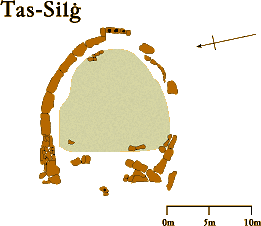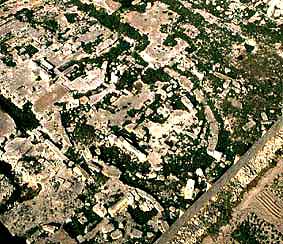i. 900-1100 CE Arab settlement or presence;
ii. 400-600 CE Byzantine church;
iii. 200 BCE-300 CE Roman remains of a sanctuary dedicated to Hera
iv. 700-200 BCE Punic Temple of Astarte
v. 3,300-3,000 BCE Megalithic Temple from the Tarxien Phase
This megalithic temple, was reused during the time of the Phoenicians and integrated into a Phoenician sanctuary. Much later, the baptistery of the Byzantine church was set in the main apse of the prehistoric temple structure.
The area of "Tas-Silg" takes it's name from a nearby Christian church dedicated to Our Lady (Mary) of the Snow (since it does not snow in Malta, the Maltese word "silg" means ice and it stands for snow, frost and hail). The prehistoric remains at 'Tas-Silg' are limited, but the site is very interesting.
If the main deity worshiped at this temple was a 'mother goddess', then the site has had a sanctuary dedicated to a female 'deity' from prehistory: the 'mother goddess', followed by Astarte, Hera, and Mary, the mother of Jesus.
![]()

